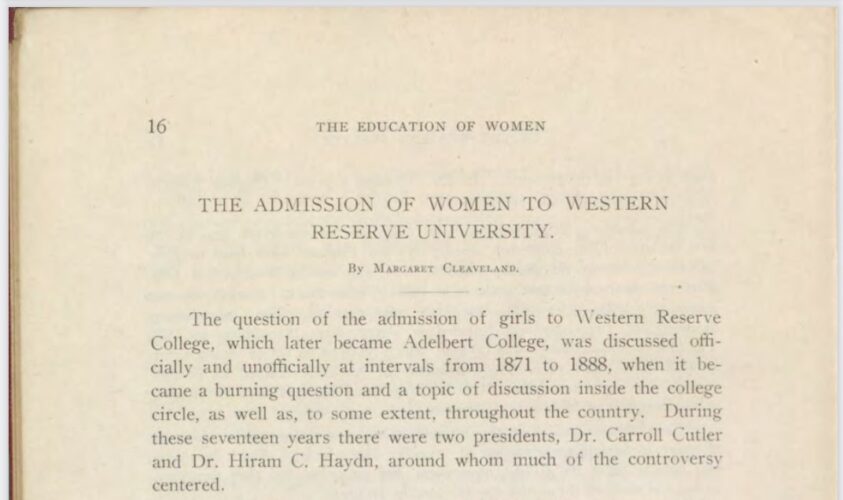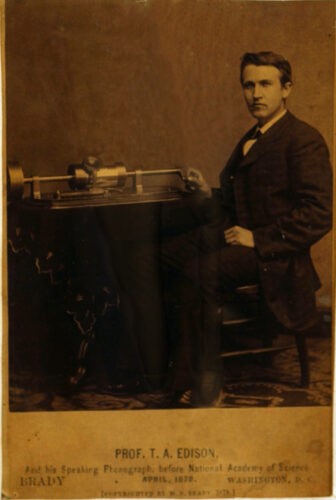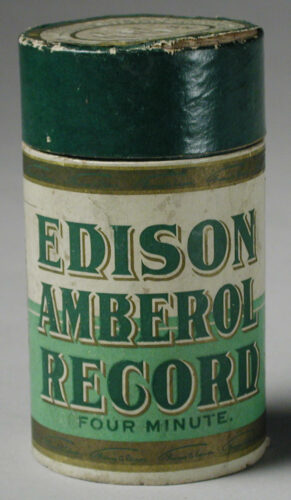Let the (pre-1923) Music Play: Public Domain Day 2022

Happy New Year’s Eve and Public Domain Day Eve! Under U.S. copyright law, works published in the United States in 1926 enter the public domain on January 1, 2022, when they will be free to use, perform, adapt, and reimagine without permission or fees. The Education of Women in the Western Reserve, published by Western Reserve University in 1926, is one of several books in the State Library of Ohio’s collection that will join the public domain. It describes the education options that were–and weren’t–available to women in the nineteenth century.

Well-known literary works entering the public domain this year include the debut novels of Ernest Hemmingway (The Sun Also Rises) and William Faulkner (Soldiers’ Pay); The Murder of Roger Ackroyd by Agatha Christie (the third of more than thirty novels featuring Belgian detective Hercule Poirot); Show Boat by Edna Ferber (which was adapted into a 1927 Broadway musical and three films of the same name); The Weary Blues, Langston Hughes’s first book of poetry; Seven Pillars of Wisdom by T. E. Lawrence (the basis of the 1962 film Lawrence of Arabia); Winnie-the-Pooh by A. A. Milne; and many more.

Films entering the public domain on January 1 include La Bohème and The Scarlet Letter (starring Ohio native Lillian Gish); Risky Business (the silent film comedy, not the Tom Cruise movie); Brown of Harvard (a sports drama that includes John Wayne in his big-screen debut); and A Hero of the Big Snows (starring Hollywood’s favorite German shepherd, Rin Tin Tin).
Musical works entering the public domain include Turandot by Giacomo Puccini (along with its famous aria, “Nessun Dorma”); the musical Oh, Kay! (featuring George and Ira Gershwin’s “Someone to Watch Over Me”); and “Are You Lonesome Tonight?” (recorded by many artists over the years, including Elvis Presley in 1960).

When we talk about musical works like those listed above, we’re referring to the published scores and lyrics–the sheet music–instead of recorded performances. Historically, sound recordings fell under individual state and local laws, and then under a mash-up of state and federal law. This mash-up effectively extended copyright protection until 2067 for recordings published after February 15, 1972, and left recordings published before that date under state laws, which generally allowed ownership rights to continue forever. However, when the 2018 Music Modernization Act revamped copyright law for the streaming era, it also brought pre-1972 sound recordings into the federal copyright system. Under the terms of the act, recordings first published before 1923 will enter the public domain on January 1, 2022. This could amount to an estimated 400,000 recordings with content ranging from vaudeville and Broadway songs to ragtime, early jazz, monologues, and sound experiments by Thomas Edison. If you’re not sure where to start, you can visit the Library of Congress’s National Jukebox collection, where more than 10,000 works are entering the public domain.
The Ohio Memory team wishes you happy listening, a Happy Public Domain Day, and a Happy New Year!
Thank you to Stephanie Michaels, Research and Catalog Services Librarian at the State Library of Ohio, for this week’s post!



Leave a Reply
You must be logged in to post a comment.